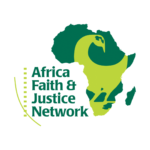Former UN Secretary General, Koffi Annan, once said: “Internal displacement is the great tragedy of our time. The internally displaced people are among the most vulnerable of the human family.”
Millions of people are forced to flee their homes or places of habitual residence each year, including in the context of conflict, violence, development projects, disasters and climate change, and remain displaced within their countries of residence. Millions more live in situations of protracted displacement or face chronic displacement risk.
As of the end of 2016, 40.8 million people were living in internal displacement globally because of conflict and violence. 30% of those people were in Africa (12.5 million). This is a crisis of enormous proportion and yet the world is largely unaware because much focus is put on refugees and migrants. It’s worth noting that women and children often make up the majority of the internally displaced.
According to the Guiding Principles on Internal Displacement, internally displaced persons (IDPs) are “Persons or groups of persons who have been forced or obliged to flee or to leave their homes or places of habitual residence, in particular as a result of or in order to avoid the effects of armed conflict, situations of generalized violence, violations of human rights or natural or human-made disasters, and who have not crossed an internationally recognized State border.”
The Guiding Principles on Internal Displacement (UN, 1998) sets out the rights of internally displaced persons (IDPs) and the obligations of governments towards them in accordance with international law. The document emphasizes the primary responsibility of national authorities for protecting and assisting all IDPs, regardless of the cause of their displacement.
Africa has its own framework for the protection and assistance of IDPs called the Kampala Convention. It is the world’s first continental instrument that legally binds governments to protect the rights and wellbeing of people forced to flee their homes because of conflict, violence, disasters and human rights abuses. Building on the Guiding Principles on Internal Displacement and the experiences, laws and policies of African states, the Kampala Convention represents an important milestone in the protection of IDPs’ rights. It explicitly sets out a role for civil society organizations in providing protection and assistance to IDPs. This guide provides examples of what CSOs can do to support the Convention’s implementation, including the incorporation of the Convention into national laws and monitoring states’ compliance with their obligations under the Convention. According to the Internal Displacement Monitoring Centre (IDMC), here are twelve ways the Kampala Convention provides IDPs with legal protection:
- Reinforces states’ primary responsibility to protect IDPs
- Establishes a legally binding definition of an IDP
- Addresses potential causes of displacement
- Facilities the adoption of national legislation on IDPs’ protection and assistance, and policies that aim to address displacement issues
- Emphasizes the need to secure funding to ensure IDPs’ protection and assistance
- Acknowledges the roles of all those involved in responding to displacement and sets out the actions required during its different phases
- Enshrines individuals’ right to be protected from displacement and states’ duty to adopt all measures needed to prevent it
- Holds all those involved, including private and multinational companies, accountable for their actions
- Prohibits armed groups from committing acts of arbitrary displacement
- States that IDPs should not be discriminated against because of their displacement, and that people with special needs should receive adequate protection and assistance according to their vulnerability
- Stipulates that states must collaborate with civil society and humanitarian organizations to ensure IDPs’ protection and assistance if they do not have the resources to do so themselves
- Makes national authorities responsible for creating the conditions required to achieve durable solutions
Attaining a durable solution to internal displacement is a process that can include:
- a return back to the place of origin,
- a local integration in the area where IDPs have taken refuge,
- or a relocation elsewhere in the country.
Internal displacement takes place in a multitude of contexts. Main triggers of displacement include armed conflicts, situations of generalized violence, human rights violations, sudden onset disasters and slow onset disasters. Development investments, such as large infrastructure or urban renewal projects, can also cause displacement and human rights violations at a large scale. In addition to the triggers there are a range of structural conditions and underlying drivers of displacement: poverty and inequality, fragile and weak governance, rapid urbanization, climate change and environmental degradation are some of these. Internal displacement can be caused by multiple and overlapping factors. In such contexts, it can be even more difficult to unpack the root causes of displacement and find solutions to it.
Photo source: Radio Okapi
By Kpakpo Serge Adotevi (AFJN Intern), Edited by Yashi Gunawardena (AFJN Intern)
